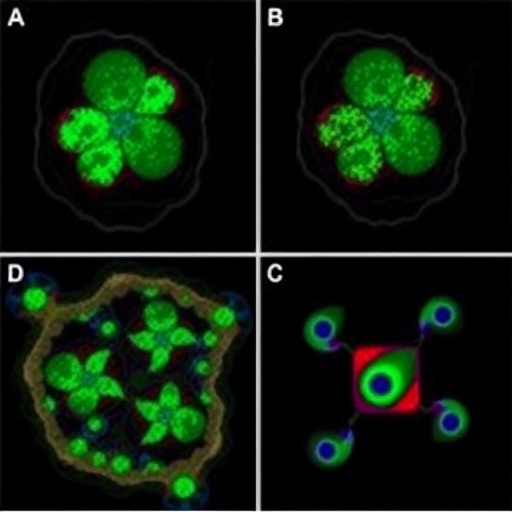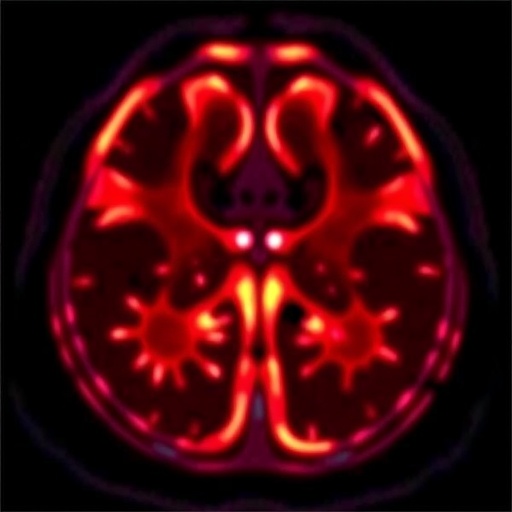Recent advances in cancer research have spotlighted the role of PPARγ, or Peroxisome Proliferator-Activated Receptor Gamma, in the progression of Oral Squamous Cell Carcinoma (OSCC). This hormone-activated transcription factor, known for its involvement in lipid metabolism and glucose homeostasis, has now been identified as a critical player in the malignant transformation of oral epithelial cells. The study conducted by Wang et al. delineates the intricate molecular pathways through which PPARγ influences OSCC, emphasizing its profound impact on the tumor microenvironment.
The mechanisms by which PPARγ modulates OSCC progression are multi-faceted, but one of the most compelling aspects is its relationship with Th17 cells. T helper 17 cells, characterized by their production of pro-inflammatory cytokines such as IL-17, are emerging as crucial mediators of tumor immunity. In the context of OSCC, the research reveals that PPARγ enhances Th17 polarization. This finding is pivotal as it suggests that the immune environment influenced by PPARγ could either suppress or promote tumor growth, depending on the balance of cytokines produced by these T cells.
Within the intricate web of signaling pathways, CEBPA, or CCAAT/enhancer-binding protein alpha, emerges as a significant target of PPARγ activity. The study confirms that the interaction of PPARγ with CEBPA profoundly influences IL-17C expression. This interplay indicates that PPARγ may act as a transcriptional regulator, orchestrating the expression of genes that can fuel OSCC progression. Understanding this connection could unlock new therapeutic strategies aimed at manipulating these pathways to inhibit tumor growth.
Moreover, the role of IL-17C, which is upregulated in many types of malignancies, provides further insight into the oncogenic potential of PPARγ. Elevated levels of IL-17C not only promote inflammation but also facilitate angiogenesis, a process essential for tumor survival and expansion. By elucidating this connection, the research underscores the complexity of the tumor microenvironment and the role of immune signaling in cancer biology.
One of the most intriguing findings of this study is the duality of Th17 responses in cancer. While Th17 cells can exert anti-tumor effects in certain contexts, there is ample evidence that they can also promote tumor growth in others. This dichotomy raises important questions about the therapeutic targeting of Th17 cells in OSCC. It highlights the necessity for a nuanced understanding of these immune cells and their interactions with cancer-associated signaling pathways.
As researchers delve into the therapeutic potential of targeting PPARγ or its downstream signaling components, the implications of this work extend beyond OSCC. The insights gained from the study could resonate across various cancer models, where the balance of immune promotion and suppression is pivotal for disease outcomes. The possibility of manipulating these pathways to swing the pendulum back towards anti-tumor immunity presents an exciting avenue for future research.
Another critical aspect of the study is its methodology. The use of in vitro and in vivo models provides a robust framework for understanding the biological relevance of the findings. By employing a combination of cancer cell lines and animal models, the authors were able to draw significant conclusions regarding the role of PPARγ in OSCC progression. This comprehensive approach adds weight to their findings and underscores the importance of utilizing multiple methodologies in cancer research.
As the scientific community continues to unravel the complex interactions between metabolism, inflammation, and tumorigenesis, the findings of Wang et al. will likely stimulate further investigations into the role of nuclear receptors in cancer biology. These insights may pave the way for the development of novel therapeutic strategies that leverage our understanding of the underlying molecular mechanisms driving OSCC.
The therapeutic landscape for OSCC is evolving, and the integration of immunotherapy with traditional modalities such as surgery, radiation, and chemotherapy is gaining traction. The findings from this research suggest that targeting PPARγ might not only inhibit tumor growth but could also enhance the effectiveness of existing therapeutic strategies. Consequently, future clinical trials exploring PPARγ modulation in OSCC patients could lead to groundbreaking changes in treatment protocols.
As the links between metabolism, immune response, and cancer biology become increasingly evident, the exploration of nuclear receptors like PPARγ will likely take center stage in upcoming research endeavors. Their regulatory functions may hold the key to understanding tumor biology better and developing innovative strategies for cancer therapy. The challenge will be to translate these findings into clinical practice while ensuring patient safety and treatment efficacy.
In conclusion, the study by Wang et al. serves as a clarion call to researchers and clinicians alike that PPARγ is more than just a metabolic regulator; it is a critical player in the complex biology of OSCC. By exploring the intersections of Th17 polarization, CEBPA signaling, and inflammatory processes, this research paves the way for new interventions in cancer treatment. As we continue to untangle the web of molecular interactions that define cancer progression, the insights gained from this study will undoubtedly foster new ideas and innovative approaches to combat this devastating disease.
The urgency of this research cannot be understated, as the global burden of oral cancer remains significant. With an increasing incidence rate worldwide, particularly in developing countries, understanding and targeting the molecular pathways governing OSCC is essential. As we look to the future, combining these findings with advancements in genomic medicine and personalized therapy could usher in a new era of hope for patients suffering from this challenging form of cancer.
Subject of Research: Role of PPARγ in Oral Squamous Cell Carcinoma Progression
Article Title: PPARγ accelerates OSCC progression via Th17 polarization and CEBPA/IL-17C signaling
Article References:
Wang, Y., Liang, J., Zhang, S. et al. PPARγ accelerates OSCC progression via Th17 polarization and CEBPA/IL-17C signaling.
J Cancer Res Clin Oncol 151, 259 (2025). https://doi.org/10.1007/s00432-025-06296-6
Image Credits: AI Generated
DOI: 10.1007/s00432-025-06296-6
Keywords: PPARγ, OSCC, Th17, CEBPA, IL-17C, cancer progression, immunology, therapeutic targets
Tags: cancer research advancements 2023CCAAT/enhancer-binding protein alpha in OSCCCEBPA signaling in OSCCcytokine production by Th17 cellsimmune modulation in tumor growthlipid metabolism in cancerPPARγ and malignant transformationPPARγ role in oral squamous cell carcinomapro-inflammatory cytokines in cancerTh17 cells and cancer immunitytranscription factors in OSCCtumor microenvironment in oral cancer





